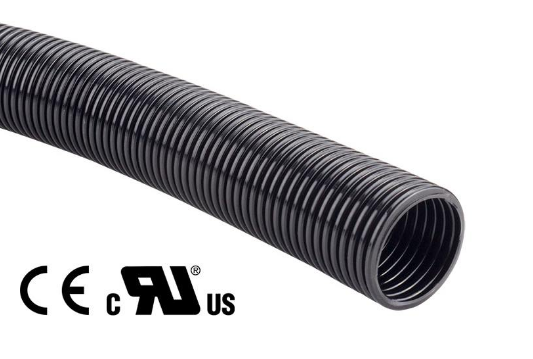Nov. 15, 2023
Non-Metallic Corrugated Conduit, often referred to as NMCC, is a versatile and resilient solution used in various industries for the safe and efficient protection of cables and wires. At its core, NMCC is a flexible tubing made from high-quality materials, providing excellent protection against environmental factors, mechanical stress, and other hazards.
The Composition of Non-Metallic Corrugated Conduit
NMCC is typically constructed from specialized thermoplastic materials, such as PVC (Polyvinyl Chloride), HDPE (High-Density Polyethylene), or PP (Polypropylene). The selection of these materials is crucial as they contribute to the conduit's durability, flexibility, and resistance to corrosion, chemicals, and UV rays.
Applications and Uses of Non-Metallic Corrugated Conduit
Electrical Industry
In the electrical industry, NMCC serves as a fundamental component for routing and protecting electrical wires and cables. Its flexibility allows easy installation in various environments, including residential, commercial, and industrial settings. Moreover, its non-conductive nature makes it a safer alternative, reducing the risk of electrical shocks and accidents.
Telecommunications Sector
Non-Metallic Corrugated Conduit finds extensive use in the telecommunications sector. It serves as a protective housing for fiber optic cables, ensuring their safety from moisture, abrasion, and other external elements. This protection is critical to maintaining uninterrupted communication networks.
Automotive and Mechanical Applications
Within the automotive and mechanical fields, NMCC plays a pivotal role in safeguarding wiring systems and cables in vehicles and machinery. Its flexibility and resistance to oils, greases, and extreme temperatures make it an ideal choice for these demanding environments.

Key Advantages of Non-Metallic Corrugated Conduit
Flexibility and Ease of Installation
NMCC's flexibility allows for easy bending and maneuvering, facilitating swift and hassle-free installations. This characteristic is particularly beneficial in tight spaces or areas with complex layouts.
Resistance to Environmental Factors
The conduit's resistance to moisture, chemicals, UV rays, and corrosion ensures the long-term integrity of cables, preventing degradation and ensuring optimal performance in diverse environmental conditions.
Cost-Effectiveness
Compared to traditional metallic conduits, NMCC is often more cost-effective due to its lower material costs and easier installation, providing a compelling economic advantage without compromising quality.
Choosing the Right Non-Metallic Corrugated Conduit
When selecting NMCC for a specific application, several factors must be considered:
- Material Type: Choosing the appropriate material based on the environment and the specific hazards the conduit will face.
- Size and Diameter: Ensuring compatibility with the cables and wires that will run through it.
- Regulatory Compliance: Adhering to industry standards and regulations for safety and performance.
Can Flexible Conduits be Used Outdoors?
Plastic pipes, especially PVC electrical conduit pipes, have a degree of UV protection. But after adding a unique formula in the production process, the anti-UV ability is greatly improved. And this kind of conduit pipe looks dark gray.
Considering the differences in the formulations of various manufacturers, the anti-UV ability is generally tested in a third party, such as SGS and other institutions. They will follow the process and use professional equipment to simulate the corrugated tube exposed to ultraviolet light in the special UV lighting box, check the aging of the corrugated tube, and finally get detailed data for rating.
If the conduit pipe supplier can provide formal test reports can be used outdoors and resist ultraviolet radiation for a long time.
Installation and Maintenance
Proper installation is crucial to maximize the effectiveness of NMCC. Following manufacturer guidelines and using compatible fittings and accessories ensures a secure and reliable system. Additionally, periodic inspections and maintenance help identify any issues early, preventing potential failures and ensuring prolonged functionality.
In Conclusion
Non-Metallic Corrugated Conduit stands as a robust and versatile solution for safeguarding cables and wires across multiple industries. Its diverse applications, coupled with its durability and protective properties, make it an indispensable asset in ensuring the reliability and safety of electrical, telecommunications, automotive, and mechanical systems.

















